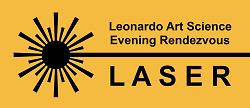Life Sciences and Healthcare
Stanford engineers invent process to accelerate protein evolution
A new tool enables researchers to test millions of mutated proteins in a matter of hours or days, speeding the search for new medicines, industrial enzymes and biosensors.
All living things require proteins, members of a vast family of molecules that nature "makes to order" according to the blueprints in DNA.
Through the natural process of evolution, DNA mutations generate new or more effective proteins. Humans have found so many alternative uses for these molecules – as foods, industrial enzymes, anti-cancer drugs – that scientists are eager to better understand how to engineer protein variants designed for specific uses.

Last modified Thu, 10 Dec, 2015 at 16:25
Bioengineering Professor Karl Deisseroth awarded $3 million Breakthrough Prize for work in optogenetics
Three Stanford professors honored by Breakthrough Prize Foundation
Karl Deisseroth, professor of bioengineering and of psychiatry and behavioral sciences at Stanford, won a $3 million 2016 Breakthrough Prize in life sciences for his contributions to the development of optogenetics, a technique that uses light to control the behavior of cells and has proved especially invaluable in the study of nerve-cell circuits in the brain.

Last modified Tue, 10 Nov, 2015 at 14:26
New 'tricorder' technology might be able to 'hear' tumors growing
A new technology has promise to safely find buried plastic explosives and maybe even spot fast-growing tumors. The technique involves the clever interplay of microwaves and ultrasound to develop a detector like the Star Trek tricorder.
When Dr. Leonard "Bones" McCoy needs to diagnose an ill member of the Starship Enterprise, he simply points his tricorder device at their body and it identifies their malady without probing or prodding. Similarly, when Capt. Kirk beams down to an alien world, his tricorder quickly analyzes if the atmosphere is safe to breathe.

Last modified Mon, 9 Nov, 2015 at 16:47
Stanford engineers help discover the surprising trick jellyfish use to swim
A Stanford-led team shows how these ancient creatures' undulating motions cause water to pull them along. This counterintuitive insight could spur new designs for energy-efficient underwater craft.
Millions of years ago, even before the continents had settled into place, jellyfish were already swimming the oceans with the same pulsing motions we observe today.
Now through clever experiments and insightful math, an interdisciplinary research team has revealed a startling truth about how jellyfish and lampreys, another ancient species that undulate like eels, move through the water with unmatched efficiency.

Last modified Tue, 3 Nov, 2015 at 15:06
Zombies, Humanoids, & Hybrids: The Creepy, The Uncanny & The Contestable
CS547 Human-Computer Interaction Seminars (Seminar on People, Computers, and Design)
Fridays 12:30-2:20 pm
Gates Building, Rm B01
Last modified Mon, 2 Nov, 2015 at 13:32
New Bioengineering Major culminated department’s evolution
Stanford has added a permanent undergraduate training program to this new field “at the interface of life sciences and engineering.”
Ever since Stanford Engineering and Stanford Medicine joined together to create the Bioengineering Department in 2002, the ultimate plan was to begin with a Master’s and PhD program and eventually add an undergraduate major.
The Faculty Senate brought this plan to fruition during the last academic year by approving Bioengineering an undergraduate major in perpetuity. Faculty Senate President Russell Berman described the new major as a milestone in Stanford’s academic life.
Last modified Thu, 22 Oct, 2015 at 14:51
Microfluidic pioneer Stephen Quake receives award in biotechnology and medicine
Brandeis University bestows the Jacob Heskel Gabbay Award in Biotechnology and Medicine on the Stanford bioengineer whose analyses using microscopic amounts of fluids are providing new medical insights.
Stephen Quake, a pioneering Stanford bioengineer whose work with microscopic amounts of fluid is transforming medicine, has received Brandeis University’s Jacob Heskel Gabbay Award in Biotechnology and Medicine.

Last modified Wed, 21 Oct, 2015 at 13:28
Seven scientists awarded grants for high-risk, high-return research
The awards are designed to encourage scientists to pursue creative research projects with the potential of leading to big improvements in health care.
Seven Stanford scientists have received awards totaling $11.5 million to pursue high-risk, high-reward research, the National Institutes of Health announced today.
They are among the 78 recipients of the 2015 Pioneer, New Innovator, Transformative Research and Early Independence awards from the NIH. The awards are designed to encourage scientists to pursue creative research projects with the potential of leading to big improvements in health care.

Last modified Wed, 7 Oct, 2015 at 16:04
Stanford researchers genetically engineer yeast to produce opioids
It typically takes a year to produce hydrocodone from plants, but Christina Smolke and colleagues have genetically modified yeast to make it in just a few days. The technique could improve access to medicines in impoverished nations, and later be used to develop treatments for other diseases.
For thousands of years, people have used yeast to ferment wine, brew beer and leaven bread.
Now researchers at Stanford have genetically engineered yeast to make painkilling medicines, a breakthrough that heralds a faster and potentially less expensive way to produce many different types of plant-based medicines.

Last modified Thu, 3 Sep, 2015 at 9:54
Leonardo Art/Science Evening Rendezvous (LASER Series)
 Thursday, August 13, 2015
Thursday, August 13, 2015
7:00 pm
Li Ka Shing, Room 120
Last modified Fri, 10 Jul, 2015 at 9:47